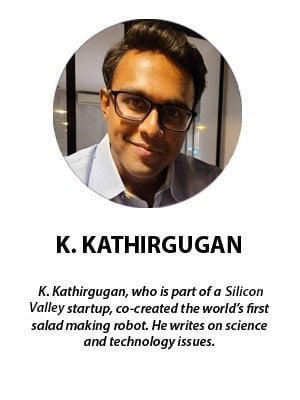
Famously, Google’s mantra in its early days was: “Don’t be evil”.
While well meaning, there is little way to enforce such a corporate stance. More often than not, if a corporation can eke out a profit without doing something explicitly illegal, they will, irrespective of the morality of the action.
Dan Romero, the co-founder of Farcaster aims to do better. He says Farcaster “can’t be evil”.
What is Farcaster, you ask?
It’s a new social media protocol that aims to return the social internet to its founding principles. Just as email is an open and decentralised protocol (SMTP), Farcaster aims to be the open and decentralised protocol for social media.
This means it provides companies with the primitives to spin up their own social media outfits but ensures the identity, data and network that users build on the Farcaster protocol are never infringed upon.
Let’s compare Farcaster with a platform like Facebook. Facebook has a monolithic architecture – it needs the user to create a profile to start using it, and has no distinction between protocol and app. Such a centralised system has its advantages – it allows Facebook to erect a walled garden – one that’s notoriously difficult to erode once sufficient network effects have been reached.
This means Facebook also owns all user data, and if it thinks someone’s content is incongruous to its platform’s policies, it can deplatform them, as it has done in the past.
Farcaster, in contrast, has a three-layered architecture. The first or base layer is the identity layer. Instead of needing users to create a new profile in the Farcaster protocol, it creates an on-chain identity for the user on the Ethereum blockchain.
A blockchain is ideal for identity creation and verification as it uses a unique cryptographic key to verify the person’s identity. In addition, it also creates a wallet for the user which they can load up with cryptocurrencies to transact with on-chain.
For practical purposes, this is what a blockchain-powered identity and money layer looks like for the internet – you would be able to traverse the web and wherever you go, you’ll have a persistent digital identity and a wallet to spend money with.
Gone will be the days of having to create a profile for every single website and having to remember hundreds of usernames and passwords. Gone also will be the days of having to key in credit card information into innumerable websites in order to transact online.
A blockchain provides a persistent digital-native identity for an increasingly digital-first life.
The second layer forms the bulk of the Farcaster protocol. It consists of a network of peer-to-peer hubs (not dissimilar to bittorrent – a staple of the life of a 90’s kid). This is where all user generated and protocol-related data is stored. This layer is censorship-resistant and all data is owned by the users.
The third and topmost layer is the app or client layer. Anyone can tap into the Farcaster protocol and blockchain underneath it to spin up an app that utilises the data, network and identities stored in it.
The Farcaster team has built an app called Warpcast (available on iOS and Android) and is the most popular app built on the Farcaster protocol. Viscerally, it feels like a hybrid of X (Twitter) and Reddit.
Recently, Farcaster’s popularity and usage has skyrocketed, reaching a key milestone of 100 thousand daily active users a few days ago.
This is thanks largely to a new feature introduced just days ago called Frames. Frames can be thought of as a portal that allows other websites to interact directly with the user natively on Farcaster.
This has wide-ranging ramifications. Let’s say there’s an ad for a paid event in the format of a Farcaster Frame. All the user has to do is click “Attend” directly on the Frame. Since the Frame acts as a portal into another website without having to leave the site, the Frame will throw up a price for it and ask the user to pay.
Clicking pay means the event organisers will be able to directly obtain funds from the user’s wallet. Once payment has been made, the ticket, in the form of an NFT, will be transferred to the user’s wallet.
With 3 clicks, the user has paid for an event and gotten a ticket for it. This is a dream for user retention. Instead of having to route a user out of the social platform, in which they spend a good chunk of their waking hours, the platform can keep them there, increasing engagement and time spent on the app.
Contrast this with the user experience in the current Web2 paradigm. The person will see a link for the event, say on their Facebook feed. When they click it, they’ll be redirected to a site like Eventbrite. There, they’ll need to sign up, key in their credit card details and then obtain a ticket.
This is a lot of friction. The only reason we put up with it is because there has never been a viable alternative. Until now, that is.
This all sounds great, but does the 12-person Farcaster team stand a chance against the social media behemoths that are competing for the same eyeballs? To say it’ll be an uphill battle is an understatement.
It remains to be seen if Farcaster’s promise will be met but, for all our sakes, I hope it comes out victorious. - FMT
The writer can be contacted at kathirgugan@protonmail.com.
The views expressed are those of the writer and do not necessarily reflect those of MMKtT.



No comments:
Post a Comment
Note: Only a member of this blog may post a comment.